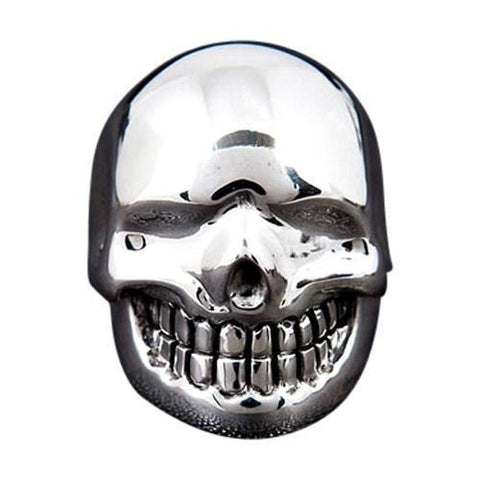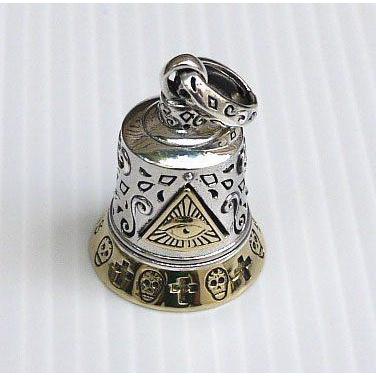Mysterious and millennia-old, eye jewelry is an amalgamation of allure and profound meaning. A specific significance greatly varies depending on a particular portrayal of the eye and where it is found. Some of the eyes have a romantic significance, another refers to powers beyond our comprehension, and others are downright eerie. It is probably impossible to describe the wealth meanings that people gave to the eye but we’d like to focus on some of the most prominent ones. If you enjoy this intriguing symbol, a few pieces of eye jewelry can be found in Bikerringshop catalogs.
The Significance of the Eye in World Cultures
The meaning of the eye is two-folded. It is related to fire (because it sees the light) and also akin to the water element (because it has tears and lachrymal fluid). These properties establish connections with the celestial bodies – the right eye is attributed to the fiery Sun and the left eye is associated with the cold Moon. The right solar eye projects its power outward. It is emitting and influencing. On the contrary, the left lunar eye is perceiving. It is subject to someone else's will and influence. The eye’s influence (the one it exerts and the one it comes sunder) extends at the physical, psychological, and magical levels.
The meaning of the eye is ambivalent. On the positive end of the spectrum are The Eye of Ra and The Eye of Horus, which represent the might, strength, and power. The negative meanings can be traced in the images of Medusa Gorgon, Basilisk, or the eye of Sauron. The ability to enslave one's will and destroy with internal evil transmitted through the eyes falls into the concept of the ‘evil eye’.

In addition to the pair of eyes we can see in the mirror, we also have the so-called Third Eye. It represents the inner vision, perception of information from the other dimensions, as well as space and time of unseen worlds. The third eye is spiritual consciousness, wisdom, and intuitive perception. It allows looking behind the curtain of illusion and seeing the essence.
Three eyes inherent in mythical creatures is the ability to observe the three worlds: dense (the world we live in), subtle, and fiery. Oftentimes, the third eye becomes a symbol of their power and sway. For example, the third eye of Shiva is a tool of destruction and punishment.
Conversely, creatures observing the world with a single eye (such as Cyclops) had a limited field of vision. In a sense, they are spiritually underdeveloped. Along with that, a single eye or even blindness could testify to a special magical and spiritual power (examples are Odin, Neo in the third Matrix, the soothsayer Vanga, etc.).

Other important meanings of the eye are perception, attention, and control. A prominent example of these concepts is the four-eyed ever-awake Chronos, who lived in ancient Greek myths. Two of his eyes were closed, possibly asleep, and the other two were always open. Thus, the god could be on his toes all the time.
Oftentimes, the image and the significance of the eye are associated with divine essences:
- Sumerian Enki, the lord of the sacred eye, is considered a symbol of wisdom and omniscience;
- The divine Eye of the Egyptians, the winged eye, stands for power, strength, and wisdom of the all-seeing God. According to another explanation, this symbol represents the pineal gland, which helps establish communication with other dimensions;
- a peacock with its plumage of many eyes is a zoomorphic image of a meditating Buddha;
- in Christianity, the eyes were depicted on the wings of cherubs and seraphim as a sign of discernment and wisdom;
- in Islam, the eye of the heart is a symbol of a clear and true vision. It can be achieved only through the heart's spiritual center.
Wadget (The Eye of Horus)
The son of Osiris and Isis, Horus was a falcon-headed deity, the patron of the sky, the sun, and the pharaoh's family. From birth, Horus's goal was to take revenge on the cruel god Seth for killing his father. Horus fought Seth in a duel and lost his left eye. Seth either crushed his eye with his foot or swallowed it. Gods witnessed this struggle and came to the rescue. According to some sources, the help came from the goddess Hathor, others say that it was the god Anubis who saved Horus. One of them aided to restore the lost eye and bestowed it with magical properties. Later, Horus, armed with his new powerful eye, brought his father Osiris back to life, and he became the patron saint of the afterlife.
The wonderful story of the loss and gain of Horus’ eye tremendously affected the perception of this symbol. The ancient Egyptians considered the eye of Horus (in their language - Wadget) a sign of resurrection and protection from the forces of evil. It came as no surprise that its images were found on sarcophagi and even mummies themselves. Apparently, this is how the family of a deceased tried to ensure his/her well-being in the afterlife. Wadget helped the living, too. It became a talisman that delivered good luck and protection from the malevolent gaze. On top of that, it was a symbol of the moon.

Subsequently, Wadget turned from a mysterious symbol to a sacred object possessing a whole lot of magical properties. Amulets depicting this symbol represented close-knit families, fertility, power, prosperity, unity, and resilience. Over time, The Eye of Horus amulets ceased to be a pharaoh’s prerogative. Warriors and commoners appealed for it to get the blessing of Horus and good luck in business. Greek and Egyptian sailors applied Wadget to the bows of their ships. They hoped that the gaze of the falcon god would protect them from reefs and storms.
In addition to these meanings, each element of the Eye of Horus has its own significance. A line ending with a spiral is considered either a symbol of a tear shed in memory of his father or a sign of energy. A straight line extending downward from the eye’s inner corner is more likely a hieroglyph standing for ‘falcon’.
By the way, Egyptian mythology gave an explanation to the right eye of Horus as well - it was a symbol of the sun. The ancient Egyptians believed that talismans featuring a solar eye would protect against spells and evil.
Over time, news of the miraculous symbol spread throughout the world. More and more people wanted to benefit from its magical powers. The eye of Horus became especially popular among the followers of the Goth subculture. Some of these individuals want to gain the lost innermost knowledge, another pays tribute to fashion, and others simply enjoy the aesthetics of the symbol.
The Eye of Providence (The All-seeing Eye)
One of the most famous and yet mysterious eyes in world culture is the Eye of Providence, the all-seeing eye of God placed within a triangle. In most cases, this eye is either left or symmetrical when it is not clear whether it is left or right. Although many people attribute this symbol to Freemasonry, it is found in cultures, religions, and the emblems of many nations. Depending on a country, the significance of the All-Seeing Eye changes from uber-positive to eerie. However, a specific meaning is common to all of them - this is the eye of the Almighty God, it observes everything and everyone.

In Christianity, The Eye of Providence personifies God while the three sides of the triangle symbolize the Holy Trinity. Items bearing this symbol denote the presence of the Lord, they as if emphasize that he sees all your deeds and actions. Sometimes, to emphasize the divine origin of this symbol, it is depicted with the light spreading around the triangle. It is similar to the halo depicted on the icons and facades of cathedrals.
Hindu traditions have their own version of the all-seeing eye. It is attributed to the third eye of the god Shiva. It symbolizes protection from evil, universal wisdom, and understanding of the world.
In the Middle East, the all-seeing eye can be seen in the Hamsa symbol also known as the Hand of God. It shows an eye inside a palm and symbolizes protection from the evil gazes and danger. Hamsa is also capable of bringing good luck to its owner.
For Buddhists, the all-seeing eye is the eye of the Buddha. It refers to enlightenment and protection.
The Masons’ Eye of Providence is an eye enclosed in a pyramid. It is also called the Radiant Delta and it represents their supreme divine essence, the Great Architect of the universe. In a sense, the Architect is the opposite of the Christian God.

Regardless of your religious preferences, this symbol can be a powerful personal amulet. All-seeing eye jewelry will protect you from evil spirits and help choose the right direction in your life. Such a symbol can bring good luck, strengthen intuition, and allow you to subtly feel danger.
Evil Eye
Multiple cultures believe that the eyes are a mirror of the soul. This idea represents the ability of the eyes to emit some kind of energy. According to the superstitions of many nations, an unkind look of an evil or magical creature causes harm and destruction. The gaze of Medusa Gorgon, a snake-haired woman from Greek myths, was able to turn a person into stone. The evil glance of Balor, the king of the Fomorians in the Irish saga, went into action when four men lifted his eyelids. To ensure protection against malevolent gazes, people crafted various amulets. Ironically, one of the most famous of them is called the evil eye.

Evil Eye amulets were found in Egyptian pyramids; ancient Romans had rings with a similar image. Today, people believe in the miraculous properties of this symbol in Cyprus, Turkey, the countries of the Mediterranean Sea, the Middle East, and the Caucasus.
As you know, the ancients did not wear jewelry; they wore amulets, charms, and talismans. These things were supposed to protect their owners from evil or give them strength. Those who wear the evil eye amulet today believe that it saves from negative emotions - anger, fear, panic, envy, jealousy, etc. The amulet found many fans among celebrities and influencers, and their list includes Meghan Markel, Cameron Diaz, Brad Pitt, Sharon Stone, and many others.

People who are not alien to superstitions install Evil Eye amulets at home, office, car, as well as wear them as jewelry.
The Eye of the Dragon
In ancient Europe, the eye of the dragon was depicted in red as a sign of demonic power. People believed that it could enchant anyone with its gaze and then drag them to its dungeon. Rudolf Koch, a well-known illustrator of ancient symbols, depicted the dragon's eye as an isosceles triangle whose inner edges form the letter "Y". This drawing meant danger, threat, and, in a sense, a choice between good and evil. In the East, the image of the dragon's eyes has the opposite meaning. Overall, dragons are protagonists and their eyes symbolize wisdom, goodness, and inner harmony.

The eye of the dragon talisman chosen consciously can give its master a gift to recognize important things, think faster, and perceive the environment. It is also able to increase security and speed up the decision-making process.
Lover's Eye
One of the most mysterious and enigmatic accessories of the late 18th and early 19th century was eye miniatures. English aristocrats wore miniature portraits of their spouses or lovers placed in a medallion, brooch, ring, pendant, or even a snuff box. Sometimes these images ‘cried' with pearl tears because they couldn’t be with their lover in person.
Since the tiny watercolors showed only the eyes, the identity of the subject could be kept secret; hence such an ornament could be worn publicly. However, it was unheard-of to put these miniatures on display because they were very personal and intimate.
These pieces of jewelry were originally called eye miniatures and the term lover's eye was coined much later by an American collector.
It is said that the Prince of Wales, who would later be known as King George IV, stood at the origins of popularization of the lover’s eye. In the 1780s, the prince started a scandalous romance with Maria Fitzherbert and the paramours exchanged eye miniatures to always ‘see’ each other. Despite the fact that the relationship didn’t last long, the trend to wear eye jewelry swept the high society of that time.

Although today’s fashion suggests other designs and symbols, the lover's eye can become an original and non-trivial ornament to celebrate your love. You would have to fork out for a custom-made miniature though. Alternatively, you may place your lover's photo in a locket. It's an old-fashioned way but it's still incredibly romantic.
Flying Eyeball
The symbol personifying the hot rod culture and firmly entrenched itself in the culture for the masses appeared in the 1950s. Rumor has it that its inventor Von Dutch, a big fan of motorcycle customizations, invented it under the influence of acid. Von Dutch himself says that he began to draw flying eyes as a child.

Be that as it may, the eye with wings is not an invention of the last century. Its history goes about 5000 years in the past and its images were found in Egypt and Macedonia. Semantically, the eye in the sky is a kind of divine essence that sees everything and knows everything. Taking inspiration from these symbols and giving them new features, Von Dutch created a legendary image that resonates with many generations of motorcycle buffs and many others. The flying eyeball jewelry is your way to show your affiliation with the motorcycle fraternity.

